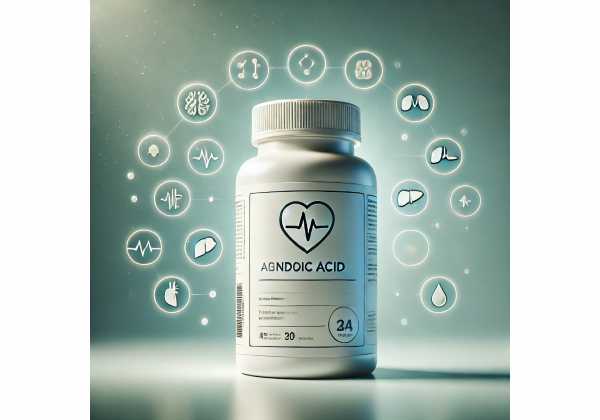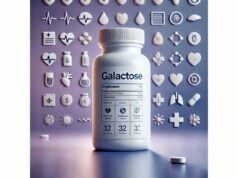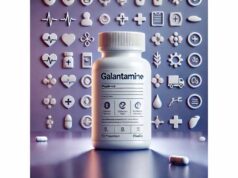
Gondoic acid—also called cis-11-eicosenoic acid or 20:1 (n-9)—is a long-chain, omega-9 monounsaturated fatty acid. It occurs naturally in certain plant oils and nuts, with particularly high levels in jojoba (a “liquid wax” widely used in cosmetics) and trace-to-low levels in edible seed oils such as rapeseed/canola. Interest in gondoic acid has grown because long-chain omega-9 fats can influence cell membranes, lipid metabolism, and inflammatory signaling. Still, research on gondoic acid itself is early and limited compared with oleic acid. This guide explains what it is, where it’s found, potential benefits, how to use it in a diet, safety considerations, and what the evidence actually shows so far. You’ll also find practical, people-first advice: realistic intake ranges, simple swaps in the kitchen, and clear guidance on who should avoid self-supplementation.
Fast Facts
- Monounsaturated omega-9 fatty acid (20:1 n-9) found mainly in jojoba oil and at low levels in rapeseed/canola.
- Early data suggest anti-inflammatory activity in immune cells; firm human benefits remain unproven.
- Practical intake when using rapeseed/canola oil: ~100–300 mg/day from 1–2 tablespoons.
- Evidence is limited; jojoba oil is not intended for ingestion—use it topically only.
- Avoid deliberate high intake if pregnant or breastfeeding, for infants and young children, or if you have lipid-metabolism disorders—seek clinician guidance.
Table of Contents
- What is gondoic acid?
- Does it have proven benefits?
- Where is it found in foods?
- How to use it and dosage
- Side effects, risks, and who should avoid
- Evidence summary and research gaps
What is gondoic acid?
Gondoic acid is a naturally occurring long-chain monounsaturated fatty acid with 20 carbons and one cis double bond at the Δ11 position. In nutrition shorthand, it’s written as 20:1 (n-9). Being an omega-9 means the first double bond is nine carbons from the methyl (omega) end of the molecule. Like other monounsaturated fatty acids (MUFAs), gondoic acid bends at its cis double bond, which influences how it packs into cell membranes and how tightly it resists oxidation.
Chemically and biologically, gondoic acid sits between the better-known MUFAs (like oleic acid, 18:1 n-9) and very-long-chain MUFAs (like erucic acid, 22:1 n-9, and nervonic acid, 24:1 n-9). The extra chain length raises its melting point relative to oleic acid and slightly improves oxidative stability compared with many polyunsaturated fatty acids. In cell membranes, long-chain MUFAs can modulate fluidity—affecting how membrane proteins move and signal. In lipoproteins (like LDL and HDL), they may influence particle size and interactions with enzymes that remodel blood fats.
Where does it show up in nature? Jojoba oil is exceptional: it’s technically a liquid wax composed mainly of wax esters formed from long-chain fatty acids and long-chain alcohols. In many jojoba varieties, eicosenoic acids (including gondoic acid) dominate the fatty acid portion of those wax esters. You’ll also encounter smaller amounts of gondoic acid across Brassicaceae (mustard/rapeseed) seed oils and in trace quantities in several nuts and seeds. In humans, gondoic acid can be detected in red blood cell membranes and plasma at low levels, reflecting dietary intake and endogenous lipid metabolism.
One important distinction: “omega-9” is not an essential fatty acid class. Humans can synthesize omega-9 fats (notably oleic acid) from other nutrients; there’s no daily requirement for gondoic acid specifically. That’s why guidance focuses on overall dietary fat quality, not on hitting a particular target for this single fatty acid. Practically, gondoic acid matters most as a marker of certain foods (e.g., jojoba is rich in it; rapeseed/canola contains a little) and as one member of a broader MUFA pattern linked to cardiometabolic health when it replaces saturated fat within balanced diets.
Does it have proven benefits?
Short answer: early, suggestive—but not definitive—evidence. Most of what’s known about gondoic acid comes from (1) compositional studies of plant oils, (2) basic science and cell experiments, and (3) observational research where many individual fatty acids are measured together. That mix tells us where it occurs and how it might act, but it does not yet prove clear, standalone health benefits in humans.
What looks promising so far?
- Inflammation signaling (preclinical): In liver-resident immune cells (Kupffer cells), purified gondoic acid has been shown to curb inflammatory responses triggered by bacterial lipopolysaccharide. Mechanistically, it lowered reactive oxygen species and dampened PKCθ/ERK/STAT3 pathway activity—classic nodes in inflammatory signaling. While mechanistic depth is encouraging, these are cell-based data. They tell us gondoic acid can affect immune pathways under controlled conditions; they don’t confirm clinical benefits in people.
- Belonging to the long-chain MUFA family: Long-chain MUFAs (which include gondoic acid) are being studied for potential effects on lipid profiles, complement and coagulation proteins, and insulin sensitivity when they appear in whole-diet patterns rich in MUFAs. However, evidence often pools several MUFAs together or centers on oleic acid. As a result, it’s hard to isolate what gondoic acid specifically contributes.
- Population studies measuring many fatty acids at once: In biomarker-based cohorts, eicosenoic acid (20:1 n-9) is sometimes tracked among dozens of fatty acids. You may see statistically significant differences or associations reported for 20:1 n-9, but these findings are context-dependent and not causal on their own. They’re best used to generate hypotheses.
- Skin and topical uses via jojoba: Jojoba oil is widely used to support the skin barrier, reduce trans-epidermal water loss, and deliver actives in dermatologic formulations. Although jojoba’s benefits are not solely attributable to gondoic acid (the oil is a complex mixture of wax esters plus other components), its high content of eicosenoic-derived wax esters is central to its texture, absorption, and stability. This is relevant for topical care—not for oral supplementation.
What isn’t established?
- No disease-specific RCTs testing isolated gondoic acid in humans for cardiovascular, metabolic, cognitive, or inflammatory outcomes.
- No agreed “therapeutic” dose in people.
- No robust head-to-head comparisons versus other MUFAs that would let us claim unique advantages.
Practical takeaway: think of gondoic acid as a minor, naturally occurring MUFA that rides along with certain oils. Choose culinary oils with proven cardiometabolic profiles (e.g., rapeseed/canola, olive) for everyday cooking. You’ll incidentally consume small amounts of gondoic acid within that healthier fat pattern without trying to target it directly.
Where is it found in foods?
Highest natural occurrence: jojoba. Jojoba “oil” is actually a liquid wax composed mostly of wax esters built from long-chain fatty acids and alcohols. In many elite jojoba lines, the eicosenoic fraction (which includes gondoic acid) is dominant, often comprising roughly two-thirds to three-quarters of the fatty acids within the wax esters. This chemical profile explains jojoba’s exceptional oxidative stability and its skin-feel benefits in cosmetics. Important caveat: commercial jojoba oil is designed and regulated for topical use. It’s not sold as an edible oil, and ingestion isn’t recommended.
Edible seed oils with small amounts:
- Rapeseed/canola oil: Typical modern low-erucic varieties contain a large share of oleic acid, meaningful linoleic and alpha-linolenic acids, and small percentages of very-long-chain MUFAs such as eicosenoic (20:1 n-9). Representative data place 20:1 n-9 around ~1–2% of total fatty acids in conventional rapeseed/canola oils, with natural variation by cultivar and growing conditions. One tablespoon (≈14 g) of canola oil would therefore supply on the order of ~100–300 mg of gondoic acid equivalents.
- Mustard/other Brassica oils: Content varies with species and breeding (notably selected to reduce erucic acid for food use). Eicosenoic acid tends to be present in the low single-digit range where data are reported, again with variability by cultivar.
Other foods: Trace amounts may appear in some nuts and seeds. In seafood, a related isomer (gadoleic acid, 20:1 n-11) is more common; don’t confuse the two—labels often group 20:1 isomers together.
Labels and testing: Nutrition labels rarely list individual fatty acids beyond “saturated,” “monounsaturated,” and “polyunsaturated” totals. If you need specifics (for research or medical reasons), a lipidomics assay or a comprehensive fatty acid profile from a certified lab is required.
Storage and cooking behavior: Being monounsaturated and relatively long-chain, gondoic-containing oils (like rapeseed/canola) handle medium-high heat well for everyday cooking. As always, minimize repeated high-temperature reuse, limit smoke formation, store oils in cool, dark places, and choose fresh bottles in reasonable sizes to reduce oxidation.
Bottom line: if you rely on mainstream culinary oils with good overall profiles, you’ll naturally ingest small amounts of gondoic acid without seeking it out. For topical skin care, jojoba remains the richest consumer-accessible source—applied externally, not eaten.
How to use it and dosage
Because gondoic acid is a naturally occurring component of foods—not an essential nutrient and not an approved therapeutic—there’s no established daily requirement or clinical dosing guideline for oral intake. Practical guidance focuses on incorporating oils that naturally contain small amounts of gondoic acid within healthy dietary patterns.
Dietary use (culinary oils):
- Everyday cooking: Use rapeseed/canola oil for sautéing, roasting, and baking. It’s neutral-tasting, affordable, and provides a favorable overall fatty acid mix. From a gondoic-acid perspective, 1–2 tablespoons/day will typically yield ~100–300 mg of 20:1 n-9—well within normal dietary exposure.
- Pair with extra-virgin olive oil: For dressings and low-to-medium heat, EVOO adds polyphenols and more oleic acid. You’ll still intake small amounts of gondoic acid if you rotate in canola or other seed oils.
- Do not ingest jojoba oil. It’s intended for topical applications and consists largely of wax esters. Keep it in your skincare routine, not your skillet.
Topical use (skin and scalp):
- Jojoba oil (cosmetic-grade): Apply a few drops to damp skin or hair to reduce transepidermal water loss and improve slip. Though gondoic acid–derived wax esters contribute to jojoba’s properties, the benefits are from the whole oil, not isolated gondoic acid.
- Patch test first if you have reactive skin. Although jojoba is well tolerated for most, individual sensitivities exist.
Timing and combinations:
- With meals: If your goal is general cardiometabolic support, the most important step is replacing part of your saturated fat (butter, shortening) with MUFA-rich oils throughout the day.
- With omega-3s: Long-chain omega-3s (EPA/DHA) and plant ALA complement a MUFA-forward pattern. You don’t need to time gondoic acid specifically; aim for overall fat quality and variety.
Who might consider targeted monitoring?
- People undergoing specialized lipidomic testing for research or medical evaluation may track 20:1 n-9 as part of a broader fatty acid panel. For routine wellness, this is unnecessary.
What about supplements labeled “gondoic acid”?
- Dedicated gondoic acid supplements are uncommon. Avoid products that promise outsized health claims or list jojoba oil for ingestion. Choose regulated, food-grade oils for cooking and cosmetic-grade jojoba for skin.
A realistic plan you can follow this week
- Swap two cooking sessions that use butter or hard shortenings with rapeseed/canola oil.
- Keep EVOO for salads and gentle heat.
- If you want a moisturizing oil, pick cosmetic-grade jojoba for topical use only.
- Reassess lipids and overall dietary pattern with your clinician or dietitian; focus on whole-diet improvements rather than chasing a single fatty acid.
Side effects, risks, and who should avoid
Dietary intake from edible oils: For most adults, the very small amounts of gondoic acid naturally present in common edible oils (e.g., rapeseed/canola) are considered part of normal dietary fat. No upper limit or toxicity threshold has been established specifically for gondoic acid at typical culinary intakes. As with any fat, total calories matter; replacing, not adding, oils supports weight and lipid goals.
Do not ingest jojoba oil. Despite its skin benefits, jojoba oil is a liquid wax formulated for topical use. Its chemistry (wax esters, minor constituents) and intended use differ from culinary oils. Ingestion can lead to gastrointestinal upset and is not recommended.
Drug interactions: No specific, well-characterized interactions exist for gondoic acid itself. However, changes in overall fat intake can influence absorption of fat-soluble medications or nutrients. If you are on lipid-lowering therapy or fat-soluble drugs, keep your overall dietary fat pattern consistent and consult your clinician before major changes.
Populations needing extra caution:
- Pregnant or breastfeeding: Safety of high, targeted intake of unusual long-chain MUFAs is not established. Stick to standard dietary oils; avoid experimental supplementation.
- Infants and young children: Use pediatrician-approved feeding practices. Do not give jojoba oil orally.
- Disorders of fatty-acid metabolism or peroxisomal function: If you have a diagnosed metabolic disorder, any targeted fatty-acid use should be supervised by a specialist team.
- Allergy/dermatitis history: For topical jojoba, patch test first. Rare contact reactions can occur.
Common mistakes to avoid:
- Chasing single-fatty-acid claims. Benefits seen with “MUFA-rich diets” usually reflect the whole pattern (more unsaturated, less saturated, more plants), not one molecule.
- Confusing erucic with gondoic acid. Both are omega-9 MUFAs but differ in chain length (22:1 vs 20:1) and regulatory context. Food-grade rapeseed/canola oils are bred to keep erucic acid very low.
- Using non-edible oils in the kitchen. Cosmetic oils (like jojoba) belong on skin or hair only.
When to seek medical advice:
- If you plan major dietary fat changes while managing cardiovascular disease, diabetes, chronic kidney or liver disease, or fat-malabsorption syndromes.
- If you notice new GI symptoms when changing oils (persistent diarrhea, steatorrhea, abdominal pain).
- If considering any non-standard supplementation involving isolated fatty acids.
Evidence summary and research gaps
What we know with confidence
- Chemistry and occurrence: Gondoic acid is 20:1 (n-9), a cis monounsaturated omega-9. Jojoba oil contains very high proportions of eicosenoic-derived wax esters; edible seed oils such as rapeseed/canola provide low percentages of 20:1 (n-9) alongside dominant oleic, linoleic, and alpha-linolenic acids.
- Culinary relevance: In the context of a MUFA-forward diet, rapeseed/canola oil is a practical, evidence-supported choice for everyday cooking; the gondoic acid you ingest through such oils reflects normal dietary exposure.
- Topical relevance: Jojoba’s high eicosenoic content explains its cosmetic behavior (spreadability, stability, barrier support). This is topical utility, not nutritional guidance.
What looks promising but requires human trials
- Anti-inflammatory actions: Cell-based work shows gondoic acid can reduce inflammatory signaling in liver macrophages by lowering reactive oxygen species and down-regulating PKCθ/ERK/STAT3 pathways. Whether this translates into measurable clinical benefits (e.g., lower inflammatory biomarkers or improved outcomes) is unknown.
- Cardiometabolic markers: Exploratory analyses sometimes note associations between 20:1 (n-9) and health endpoints, but they’re inconsistent and confounded by broader dietary patterns. Dedicated RCTs with purified gondoic acid (or specifically enriched oils) are needed to isolate effects.
Key gaps holding back guidance
- No established intake target for gondoic acid; public-health recommendations focus on overall fat quality.
- Sparse dose-response data in humans.
- Limited head-to-head comparisons against other MUFAs (oleic, nervonic) to identify uniqueness.
- Inadequate long-term safety data for high isolated intakes (though typical dietary amounts appear benign).
Practical, people-first bottom line
- Keep priorities straight: choose cooking oils with strong evidence for cardiometabolic health (rapeseed/canola, olive), emphasize whole foods, and let minor fatty acids—including gondoic acid—fall into place naturally. Use jojoba on skin, not on a plate. Stay skeptical of supplement-style marketing for isolated 20:1 (n-9); robust human data aren’t there yet.
References
- Evaluation of the Effect of Elite Jojoba Lines on the Chemical Properties of their Seed Oil 2022 (Study)
- Jojoba Oil: An Updated Comprehensive Review on Chemistry, Pharmaceutical Uses, and Toxicity 2021 (Review)
- Gondoic acid alleviates LPS-induced Kupffer cells inflammation by inhibiting ROS production and PKCθ/ERK/STAT3 signaling pathway 2022 (Preclinical Study)
- Omega-9 fatty acids: potential roles in inflammation and cancer management 2022 (Review)
- Comparison of the effect of rapeseed oil or amaranth seed oil supplementation on weight loss, body composition, and changes in the metabolic profile of obese patients following 3-week body mass reduction program: a randomized clinical trial 2020 (Clinical Trial; includes fatty-acid table)
Medical Disclaimer
The information in this article is for educational purposes only and is not a substitute for professional medical advice, diagnosis, or treatment. Do not use it to replace guidance from your physician, pharmacist, or registered dietitian. Always seek the advice of a qualified healthcare professional with questions about your diet, supplements, medications, or any medical condition. If you are pregnant, breastfeeding, managing a chronic illness, or considering non-standard supplementation, consult your clinician before making changes.
If you found this helpful, consider sharing it with a friend on Facebook or X, or wherever you spend time online. Your support helps us keep producing clear, evidence-based guides. Thank you.










